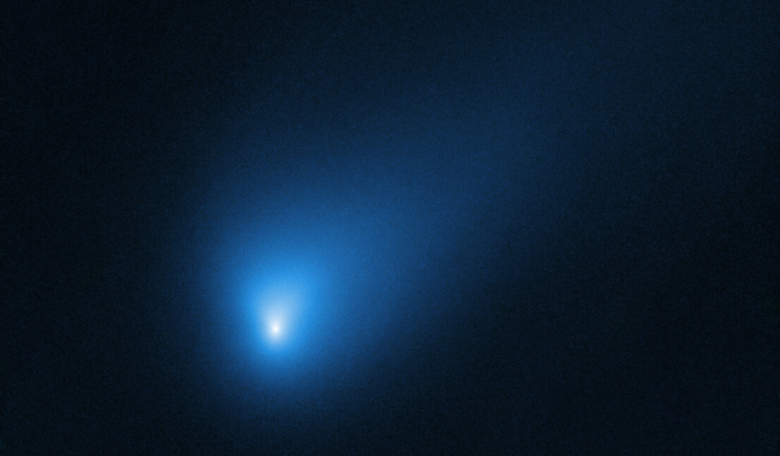On 12 October 2019, the NASA/ESA Hubble Space Telescope provided astronomers with their best look yet at an interstellar visitor — Comet 2I/Borisov — which is believed to have arrived here from another planetary system elsewhere in our galaxy.
This observation is the sharpest view ever of the interstellar comet. Hubble reveals a central concentration of dust around the solid icy nucleus.
Comet 2I/Borisov is only the second such interstellar object known to have passed through our Solar System. In 2017, the first identified interstellar visitor, an object dubbed ‘Oumuamua, swung within 38 million kilometres of the Sun before racing out of the Solar System.
“Whereas ‘Oumuamua looked like a bare rock, Borisov is really active, more like a normal comet. It’s a puzzle why these two are so different,” explained David Jewitt of UCLA, leader of the Hubble team who observed the comet.
As the second interstellar object found to enter our Solar System, the comet provides various invaluable insights. For example, it offers clues to the chemical composition, structure, and dust characteristics of a planetary building block presumably forged in an alien star system a long time ago and far away.
“Because another star system could be quite different from our own, the comet could have experienced significant changes during its long interstellar journey. Yet its properties are very similar to those of the Solar System’s building blocks, and this is very remarkable,” said Amaya Moro-Martin of the Space Telescope Science Institute in Baltimore, Maryland.
Hubble photographed the comet at a distance of approximately 420 million kilometres from Earth [1]. The comet is travelling toward the Sun and will make its closest approach to the Sun on 7 December, when it will be twice as far from the Sun as Earth. It is also following a hyperbolic path around the Sun, and is currently blazing along at the extraordinary velocity of over 150 000 kilometres per hour. By the middle of 2020, the comet will be on its way back into interstellar space where it will drift for millions of years before maybe one day approaching another star system.
Crimean amateur astronomer Gennady Borisov first discovered the comet on 30 August 2019. After a week of observations by amateur and professional astronomers all over the world, the International Astronomical Union’s Minor Planet Center computed an orbit for the comet which showed that it came from interstellar space. Until now, all catalogued comets have come either from a ring of icy debris at the periphery of our Solar System, called the Kuiper belt, or from the Oort cloud, a shell of icy objects which is thought to be in the outermost regions of our Solar System, with its innermost edge at about 2000 times the distance between the Earth and the Sun.
2I/Borisov and ‘Oumuamua are only the beginning of the discoveries of interstellar objects paying a brief visit to our Solar System. There may be thousands of such interstellar objects here at any given time; most, however, are too faint to be detected with present-day telescopes.
Observations by Hubble and other telescopes have shown that rings and shells of icy debris encircle young stars where planet formation is underway. A gravitational interaction between these comet-like objects and other massive bodies could hurtle them deep into space where they go adrift among the stars.
Future Hubble observations of 2I/Borisov are planned through January 2020, with more being proposed.











